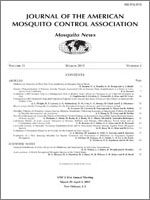In the Culex pipiens complex, a common mechanism of insecticide resistance is amplification of esterase genes leading to overproduction of detoxifying esterase enzymes. A number of electrophoretic esterase alleles have been identified, and in field populations individuals with the same esterase electromorph can exhibit a wide range of esterase enzyme activities. We isolated and characterized esterase activity variants associated with the esterase B1 electromorph from a field strain. A mating scheme was used to isolate chromosomes with esterase genes from the strain into 45 families. Twenty-six of the families received esterase genes from the field strain that conferred elevated esterase activity. Mean esterase activities in these families ranged from 43 to 695 nmoles α-naphthyl acetate hydrolyzed/min/mg protein. Variance components indicated that genetic variance (i.e., genetic differences among families) accounted for 77% of the total variation in esterase activity. A comparison of mean esterase activities indicated that there were at least 11 different esterase activity variants contributing to the observed genetic variation in esterase activity among the 26 families. The relevance of these results to understanding the dynamics of amplified esterase genes in populations is discussed.
How to translate text using browser tools
1 March 2015
Genetic Characterization of Esterase Activity Variants Associated with an Esterase Gene Amplification in a Strain of Culex pipiens from California
James A. Ferrari
ACCESS THE FULL ARTICLE
It is not available for individual sale.
This article is only available to subscribers.
It is not available for individual sale.
It is not available for individual sale.
Culex pipiens complex
esterases
gene amplification
Genetics
insecticide resistance





